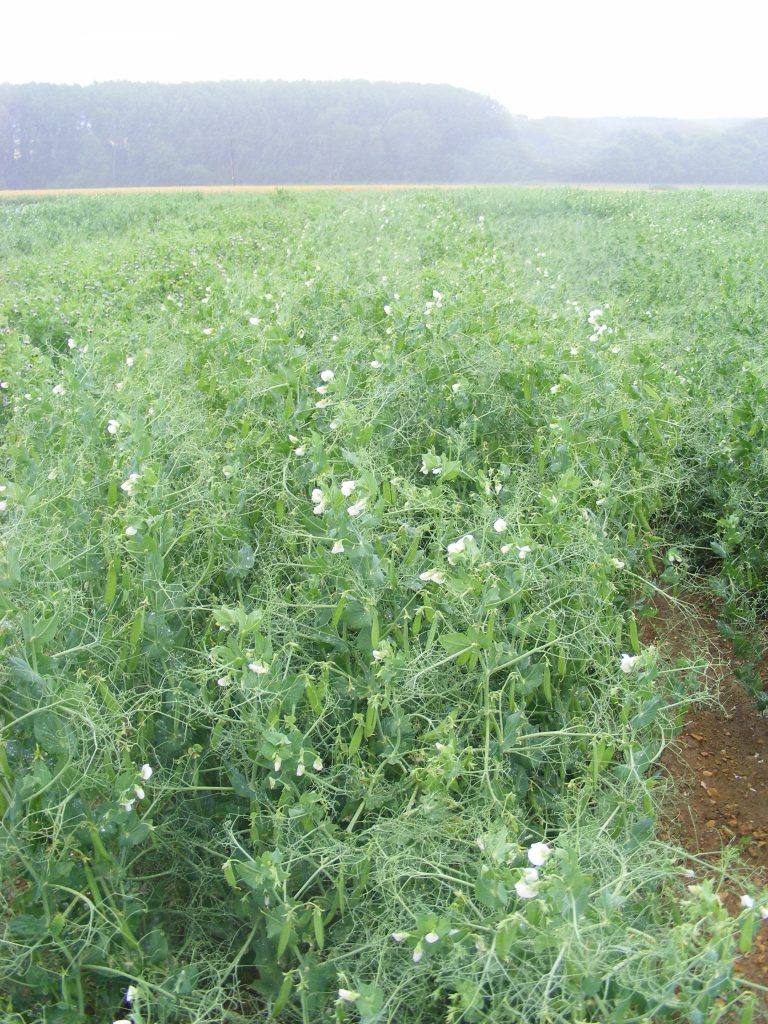PGRO pest update
7th June 2018
Pea moths have been recorded in some regions of the UK over the last few days and in some cases more than 10 moths in a single trap have been
Pea moths have been recorded in some regions of the UK over the last few days and in some cases more than 10 moths in a single trap have been observed, reports the PGRO.
Predicted spray dates for regions can be found on the PGRO website at http://www.pgro.org/pea-moth/ under the pest, diseases and weeds tab.
Timing of sprays in combining peas is related to egg development, and this is affected by temperature. Control of the larvae must be carried out following egg-hatch and before they reach the pod, and the monitoring system will accurately predict this.
On the predicted spray date, crops which are at the first pod formation stage or those that have flowered should be sprayed, and later crops should only be sprayed when they reach first pod formation. Crops with green pods are susceptible to damage.
A second application should be applied 10-14 days later. In vining peas, a lower threshold of damage is tolerated, and traps should be used as an indication of moth presence.
Silver Y moth
Silver Y moths have been observed in large numbers in some regions of the UK. A threshold is reached when a cumulative total of 50 moths have been caught in a trap by the time that the peas have reached the first pod stage.
When the threshold has been reached in vining peas, a single spray of a pyrethroid insecticide, approved for pea moth control, should be applied 10-14 days later. This application will control both large and small caterpillars, which fall off the plants before the crop is harvested.
Bean seed fly
There have been a high number of reports of bean seed fly larvae damage in peas sown at the end of April and beginning of May.
The flies lay eggs on bare soil, around newly planted seeds of late spring-sown peas and beans. They are attracted by germinating seeds and soils that have high levels of organic matter such as green weed material, plant debris and farmyard manure. The flies aggregate, and damage may be seen in patches as well as affecting individual plants.
In the absence of an available insecticidal seed treatment there are no effective chemical means to control damage. Damage may be reduced by limiting the amount of green material present in soils, and in most years earlier sowing reduces the likelihood of attack by larvae.
The main symptoms of attack are seed and stem tunnelling, caused as larvae feed on germinating seed and seedlings. Older plants are usually able to withstand attack. In cases of severe damage, seedlings may die, or produce secondary shoots from the seed. In Phaseolus beans the plants are unable to compensate in this way, and often die. Applications of insecticide immediately following sowing are not particularly effective.
Aphids
Pea and black bean aphids have been recorded in suction traps in the last week and reports of small field colonies in peas and beans have been received.
Updates on suction trap catches and activity of crop aphid species can be found in the summaries provided by AHDB on the PGRO website at www.pgro.org or at
https://cereals.ahdb.org.uk/monitoring/aphid-news.
The AHDB Aphid News bulletins provide information about when aphids are migrating at key times of the year, and support for this project is provided by BBSRC, The Lawes Agricultural Trust, PGRO, BBRO, AHDB and other industrial supporters.
Application of pirimicarb should be carefully timed to optimise effectiveness, as it is limited to a single application in beans and peas. Pyrethroids may give partial control of aphids. In vining peas, combining peas and field beans thiacloprid is available to control aphids. Care should be taken when applying insecticides to avoid harm to beneficial organisms.
For further information call the PGRO technical advisory line on 01780 782585.
Bruchid beetle
It is likely that winter beans have reached first pod stage and may be at risk of damage.
In those regions where bruchids are present, insecticides should be applied when the temperature threshold has been reached and around 50% of pods on bottom trusses are 2 cm long. Some earlier drilled spring beans may be approaching the first pod stage, although later drilled crops may be some way from this growth stage.
Sign up for the Syngenta BruchidCast forecasting service by going to www.syngenta.co.uk/bruchidcast. The forecast predicts when the temperature threshold of 20°C for two consecutive days has been reached and indicates suitable conditions for applications. Growers should check that first pods have set.
To avoid risk to foraging bees and other beneficial organisms spraying should be carried out very late in the evening or at night time.

